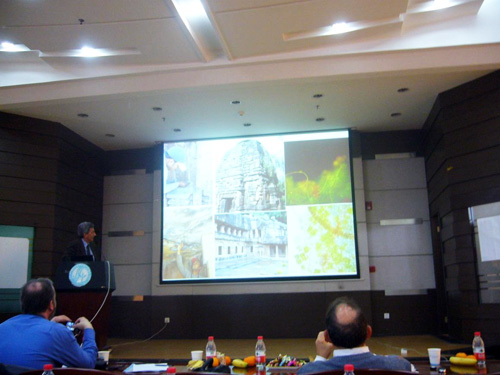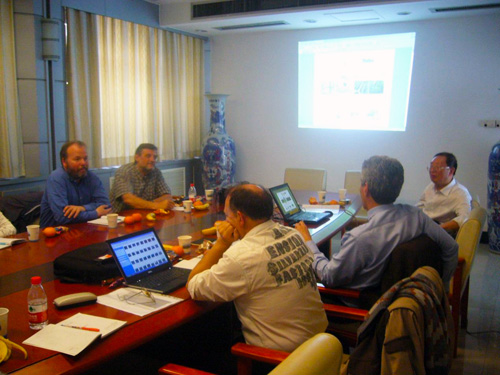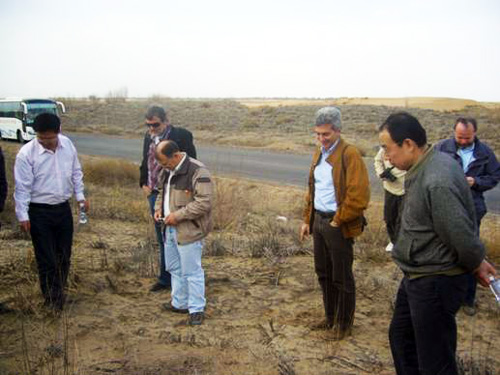
International
International Symposium on Environmental Biology of Algae

Roberto De Philippis, Secretary of the International Society for Applied Phycology and Professor of University of Florence, made a presentation entitled “Exopolysaccharide-producing cyanobacteria: a resource or a nuisance?” at the symposium.
The International Symposium on Environmental Biology of Algae was held at Institute of Hydrobiology, Chinese Academy of Sciences (IHB) during April 10 and 20.
This symposium covered a wide range of topics, including the relationship between algae and environment and the role that algae playes in environmental restoration. The symposium was chaired by IHB Prof. LIU Yongding. IHB deputy director Prof. XU Xudong made a welcome speech at the opening ceremony. Scholars from Italy, France, Slovenija, Germany and Great Britain were present at the symposium.
IHB has established and developed a stable and long-term cooperative relationship in the fields of cyanobacterial blooms, sand-consolidating cyanobacterial strains and closed ecological systems based on algae with French National Center for Scientific Research, University of Paul Sabatier, University of Florence, National Institute of Biology in Slovenia, University of Ljubljana and University of Erlangen–Nuremberg in Germany. This symposium provides a platform for each side to explore more fields of cooperation, either bilateral or multilateral. The symposium participants presented the latest progress ever made in their respective fields.

The symposium participants had a discussion with IHB scholars.
After the symposium, the symposium organizing committee arranged a field trip to the demonstration center of sand-consolidating cyanobacterial strains which is located in Inner Mongolia Autonomous Region. Scholars positively commented on the accomplishment that IHB has made in the control of desertification by sand-consolidating cyanobacterial strains and proposed several feasible programs that both sides can further cooperate in. During their visit in Inner Mongolia Autonomous Region, the symposium participants had a seminar with leaders from Inner Mongolia Forestry Administration and Inner Mongolia Academy of Forestry Sciences, discussing on how to push the cooperation and technological application in various fields of mutual interests.
This symposium was jointly sponsored by IHB and the State Key Laboratory of Freshwater Ecology and Biotechnology.

The symposium participants had a field trip to the demonstration center of sand-consolidating cyanobacterial strains which is located in Inner Mongolia Autonomous Region.